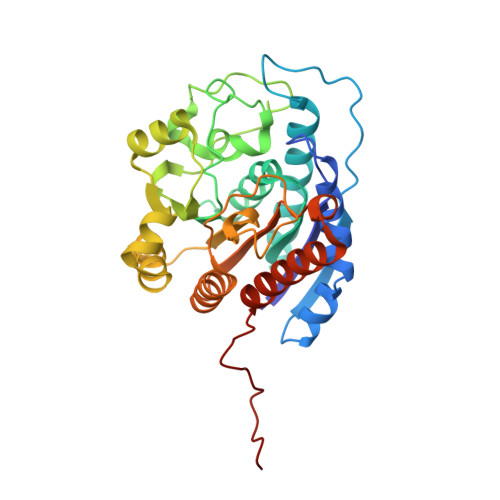Binding of the unreactive substrate analog L-2-amino-3-guanidinopropionic acid (dinor-L-arginine) to human arginase I.
D'Antonio, E.L., Christianson, D.W.(2012) Acta Crystallogr Sect F Struct Biol Cryst Commun 68: 889-893
- PubMed: 22869115
- DOI: https://doi.org/10.1107/S1744309112027820
- Primary Citation of Related Structures:
4FCI, 4FCK - PubMed Abstract:
Human arginase I (HAI) is a binuclear manganese metalloenzyme that catalyzes the hydrolysis of L-arginine to form L-ornithine and urea through a metal-activated hydroxide mechanism. Since HAI regulates L-Arg bioavailability for NO biosynthesis, it is a potential drug target for the treatment of cardiovascular diseases such as atherosclerosis. X-ray crystal structures are now reported of the complexes of Mn(2)(2+)-HAI and Co(2)(2+)-HAI with L-2-amino-3-guanidinopropionic acid (AGPA; also known as dinor-L-arginine), an amino acid bearing a guanidinium side chain two methylene groups shorter than that of L-arginine. Hydrogen bonds to the α-carboxylate and α-amino groups of AGPA dominate enzyme-inhibitor recognition; the guanidinium group does not interact directly with the metal ions.
Organizational Affiliation:
Roy and Diana Vagelos Laboratories, Department of Chemistry, University of Pennsylvania, Philadelphia, PA 19104-6323, USA.
















